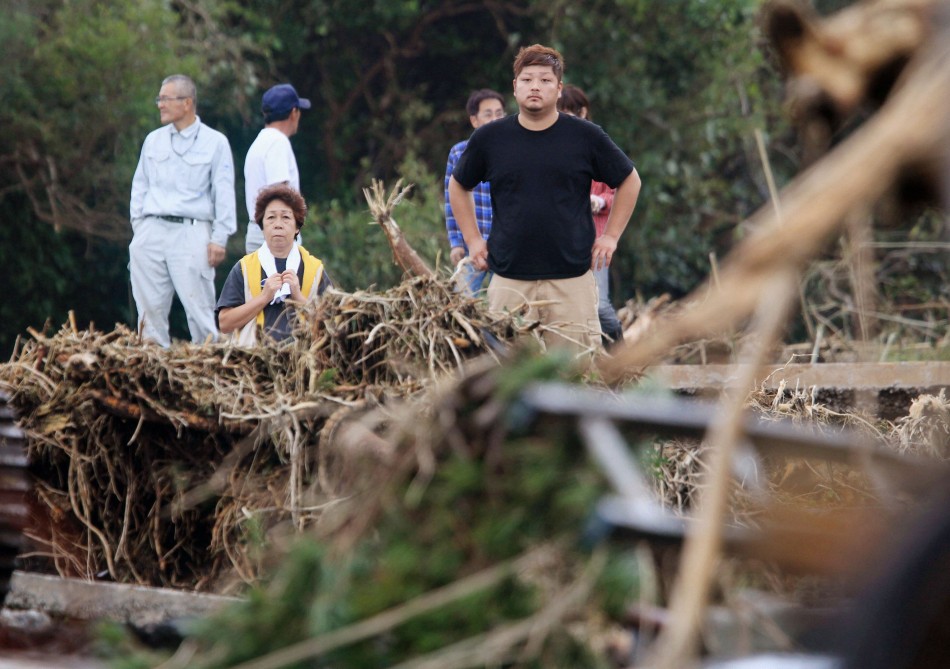Typhoon Wipha Pounds Japan Killing 14 in Tokyo [PHOTOS]
Typhoon Wipha has killed at least 14 people in and around Tokyo and is moving towards Japan's Pacific coastline.
The typhoon decimated the island of Izu Oshima, a tiny island around 100km to the south of Tokyo, where 13 people died and more than 50 were reported missing.
Wipha, the strongest typhoon to hit Japan in a decade, battered Izu Oshima with strong winds and torrential rains. The storm triggered landslides, leaving scores of damaged houses in its wake.
Victims were found buried under mud and debris as rescue workers fought to clear the damage.
"I heard a crackling sound and then the trees on the hillside all fell over. Then mud slid as far as the house," a woman who gave her name as Oshima told NKH television channel.
A woman also died in central Toyko after plunging into a river. She was eventually found 10km downriver in Yokohama.
The storm ravaged transportation across the capital and knocked out power supply in several parts of the city. More than 500 flights have been cancelled to and from Tokyo airports, while schools remain shut.
Local officials are attempting rescue operations in some regions.
The powerful storm brushed past the wrecked Fukushima nuclear power plant, forcing the operators to take precautionary measures.
"We are making preparations for proper management of contaminated water. . . . We will patrol places that could have inflows of water [from the storm]," a spokesperson for the operators of the plant said.
The plant operator Tokyo Electric Power Co (Tepco) has been pumping out rainwater and sending it to storage tanks to check for any radioactivity before releasing it to the sea.








© Copyright IBTimes 2024. All rights reserved.









